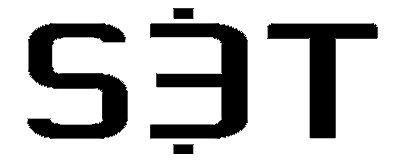🫖 Cure for the Common GenAI Hangover

In this edition of S3T:
- Special Feature: S3T Panorama: Evolution of AI.
- 📉 AI Hangover: Most companies struggle to prove GenAI's consistent, reliable, and cost-effective usefulness, despite investor gains in key stocks.
- 🤖 Tech Tensions: Apple and Microsoft face challenges with OpenAI integration, causing strain and financial concerns over their AI relationship.
- 🔗 Weakest Links in 21st Century Economy: Change Healthcare's ransomware attack in February 2024 paralyzed medical billing across the industry. Now Synapse's bankruptcy led to the freezing of tens of thousands of business and personal banking accounts. Tech Intermediaries are the new weakest link.
- 🔐 Zero Trust Security & Decentralized Architectures: Zero trust models reduce cyber threats by not automatically trusting anything inside or outside the network perimeter. Distributing data or other assets across multiple nodes eliminates single points of failure, enhancing resilience and security.
- 🚀 Risk Management Innovation: Huma Finance is developing a decentralized risk management platform, bridging traditional finance with decentralized finance.
- 🎮 Gaming Partnership: ELLE and My Neighbor Alice celebrate over a year of partnership, overcoming challenges in decentralized gaming usability and adoption.
Welcome to S3T, the essential newsletter, podcast, and learning platform for change leaders. Every week we review the top developments and insights you need to stay ahead of the curve, build your ethics & leadership skills, and drive intentional beneficial innovation.
🎧 Listen to this episode on the S3T Podcast - Be sure to follow the S3T podcast so you never miss a show!
Opinions expressed are those of the individuals and do not reflect the official positions of companies or organizations those individuals may be affiliated with. Not financial, investment or legal advice. Authors or guests may hold assets discussed.

Too Big to …be resilient
Intermediaries - companies that provide services to larger incumbent firms and industries - represent a new risk to the economy with 2 recent examples of how intermediaries can paralyze large sets of regulated companies, and impact their customers:
- Feb 2024 - Change Healthcare ransomware attack paralyzes medical billing across the healthcare industry
- April 2024- the bankruptcy of Synapse a fintech intermediary leads to the freezing of tens of thousands of business and personal banking accounts.
The recent incidents involving Change Healthcare's ransomware attack and Synapse's bankruptcy highlight the vulnerabilities associated with centralized intermediaries, and underscore the need for change leaders to understand zero trust decentralized architectures.
- Zero trust models operate on the principle of not automatically trusting anything inside or outside the network perimeter, reducing the attack surface for cyber threats.
- Decentralized architectures distribute data and services across multiple nodes, eliminating single points of failure and enhancing resilience.
These approaches can help organizations and economies mitigate risks associated with centralized intermediaries, ensuring greater security and continuity in the face of disruptions. Start by exploring the principles of zero trust security and the pros and cons of decentralized architectures.
Risk Management Innovation
Risk management is the substrate that the world's economy runs on, but it is not a widely understood or necessarily transparent field. But most of the large outcomes we all say we want to achieve - affordable healthcare, climate restoration, financial equality and security, economic growth, innovation - all are literally enabled or constrained by the way we manage risk.
So as change leaders we want to take notice when notable risk management and financial innovation attempts are made.
Huma Finance is building a next generation decentralized risk management platform - decentralized risk and lending solutions backed by income, receivables and automated risk underwriting.
Huma's approach recognizes the need to bridge the current finance world with the emerging decentralized finance world, which is still growing its capital and cashflow base. Would be qualified borrowers likely have more off-chain assets that could be used as collateral than on-chain asserts. For detailed documentation, see Huma Finance Protocol white paper here.
This is another interesting example of the experimentation happening at the intersection of risk management innovation, financial services and blockchain architectures.

ELLE & My Neighbor Alice 1 Year On
It has been just over a year since ELLE announced its partnership with decentralized game My Neighbor Alice to deliver a gaming experience centered on "fashion, lifestyle and gaming". This week CoinmarketCap sat down for an interview with Chief Product Officer Riccardo Sibani for a look at the progress so far and what's next. The interview is a good index of the usability and adoption challenges that decentralized games are learning to overcome. Success means playing the game "without realizing that a blockchain underlies it."

SNPad attempts AI-crypto disruption of TV advertising
When users install the free SNPad app on their smart TVs or mobile devices, the app seamlessly replaces TV commercials with personalized advertisements from its own network, without altering the live TV content. SNPad uses AI to detect when regular programming breaks for commercials. Users earn SNPAD crypto tokens for each ad they watch. Deep dive on how SNPad works here.


Your GenAI Hangover Kit: find the "boring useful stuff"
In January the Wall St Journal suggested that an AI Hangover might just be getting started, and that turned out to be prescient. Investors in a few key stocks saw big gains, but most of the companies actually attempting to get business value from GenAI are struggling to prove that it can do something useful in a reliable consistent manner, that is better and more cost effective than alternatives.
The elusive trifecta:
- Do something useful
- Do it correctly in a consistent reliable manner
- Do it better and more cost effectively than currently available alternatives.
Most use cases are doing 1 or 2, not all 3. If you're feeling like "why can't we do something!" or "why is it taking so long" or "why is it so hard"...you're not alone.
Maybe the biggest hangover of all ...
Apple and Microsoft are having 2nd thoughts after reportedly entering into a troubled relationship brokered by OpenAI:
- Apple is embedding OpenAI capabilities via RAG architecture into its products apparently against the wishes of its own AI team.
- Microsoft meanwhile worries that the deal - which apparently happened without their involvement - guarantees that Apple's user base will put a strain on its servers.
Microsoft is in deep - the firm is apparently responsible for almost 20% of NVIDIAs revenues, has put $13B into OpenAI, and to make matters worse, has a cap on what it can recoup on its OpenAI investment.
Boring but Useful
Away from the hype and high stakes headlines, a diverse set of advanced analytics approaches are quietly finding ways to deliver value. For example LORIS is a logistic regression algorithm that consistently predicts how well patients will respond to immunotherapy - a treatment that leverages a person's own immune system to fight cancer. You can try it out for yourself online here.
Beyond niche applications, one trend is expected to strengthen: Large Language Models trained on domain data - that is industry specific data held by individual companies or consortiums. This class of data is largely out of reach of companies like OpenAI, since they lack access and/or the legal basis to be able to use it. In the US, data deemed to be PHI has specific limitations on who can access or use it, and what specifically they can use it for. For the top engineers in these fields, training LLMs on domain specific data is a no-brainer and the GenAI craze is basically just a distraction.
Here's hoping
None of this means there won't be any value in Gen AI. GenAI appears to be on track to disrupt search, traditional chatbots, and perhaps as Joe Procopio notes, the Software as a Service business.
"GenAI exposes SaaS as just a clunky middleman between you and your data: Developers of software and apps will no longer be able to get away with just barfing out aggregated and summarized data back to the user for them to make their own business decisions." Joe Procopio

Continued Learning:
S3T Panorama: The Evolution of AI
This Panorama provides a wider perspective on the evolution of AI that can help ground decision-makers with an objective understanding of the capabilities and realistically what they can be used for.
S3T Playbooks
S3T Playbook: How to evaluate AI Use Cases.
Learn to use 8 overlooked questions that can determine whether a GenAI use case is actionable or not. In the dynamic world of Gen AI, the ability to identifying legitimate and actionable use cases is becoming new crucial skillset for leaders.
S3T Playbook: Developing and Maintaining an Independent Understanding of Modern Technology
Developing your own independent understanding of the ongoing evolution of technology can protect you and your team from unwise hype-driven decisions and investments. Understanding the evolving path of emerging tech can serve as a safeguard against the over hyped messaging that comes from industry press, vendor sales teams or strategy consultants that sell implementation services.
Thank you for reading and sharing S3T. If you are enjoying S3T please give it a like or repost on LinkedIn or other platforms where you learn and share! This helps us with our mission of encouraging change leaders and innovators in their vital work.



Member discussion